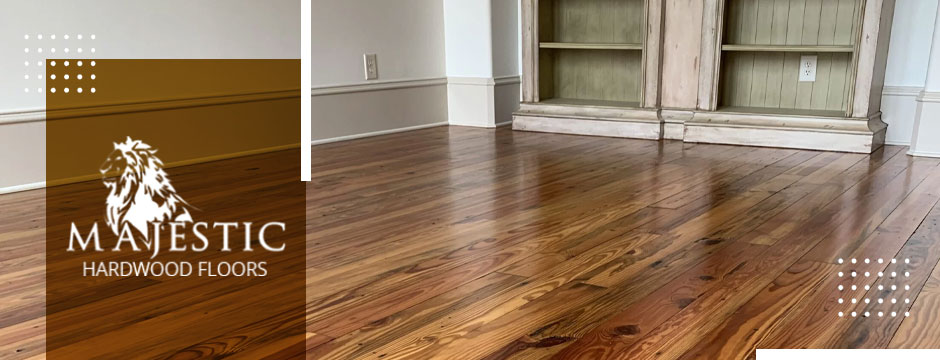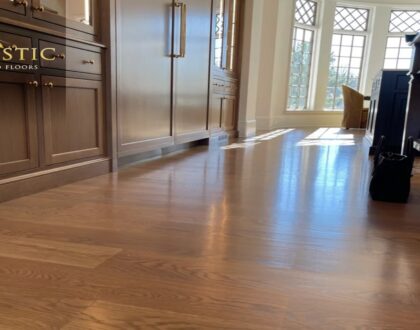The Crucial Role of Underlayment in Successful Hardwood Floor Installation

When it comes to installing hardwood floors, it’s not just about the beautiful planks that catch your eye. The unsung hero of the installation process is the underlayment. Often overlooked, underlayment plays a critical role in ensuring the longevity, comfort, and overall performance of your hardwood flooring. In this comprehensive guide, we will delve into the significance of underlayment in hardwood floor installation and how it contributes to a flawless, long-lasting result.

Understanding Underlayment: What Is It?
Before we dive into its role, let’s understand what underlayment actually is. Underlayment is a thin layer of material that is installed between the subfloor and the hardwood flooring. It acts as a buffer, providing several benefits that directly impact the performance of your hardwood floors.
- Moisture Barrier Protection
One of the primary functions of underlayment is to act as a moisture barrier. Moisture from the subfloor can seep into hardwood, causing warping, cupping, and even mold growth. Quality underlayment, often made of materials like foam or plastic, prevents moisture from reaching the hardwood, thus safeguarding the integrity of your investment.
2. Sound Dampening and Acoustic Comfort
Walking on hardwood floors can sometimes result in echoes and sound reverberation, creating a noisy environment. Underlayment with sound-dampening properties can significantly reduce these noises, creating a quieter and more comfortable space. Whether it’s the click of heels or the pitter-patter of pets’ paws, a good underlayment helps maintain a peaceful ambiance.
3. Subfloor Imperfection Compensation
Subfloors are not always perfectly smooth or even. Uneven spots can lead to issues during hardwood installation, causing gaps or uneven surfaces. Underlayment serves as a cushion that helps to compensate for minor irregularities in the subfloor, resulting in a smoother, more even hardwood surface.
4. Thermal Insulation
Underlayment can provide a layer of thermal insulation, especially in areas where cold temperatures are a concern. This insulation helps to keep your space warmer, reducing the cold feeling often associated with hardwood floors in winter months.
5. Enhanced Flooring Longevity
A properly chosen underlayment can significantly extend the lifespan of your hardwood flooring. By protecting the hardwood from the stresses of daily use and potential subfloor issues, underlayment contributes to the durability and longevity of your investment.
Choosing the Right Underlayment: Factors to Consider
Now that we understand the importance of underlayment, let’s explore the key factors to consider when selecting the right underlayment for your hardwood floor installation project:
- Material Composition
Underlayment materials vary, including foam, cork, rubber, and synthetic options. The choice of material depends on factors such as moisture levels in your area, sound insulation needs, and personal preferences.
2. Moisture Resistance
If you’re installing hardwood in areas prone to moisture, like bathrooms or basements, choosing an underlayment with high moisture resistance is crucial to prevent damage.
3. Thickness
Underlayment thickness can impact how well it compensates for subfloor imperfections and provides comfort. Thicker underlayment generally offers better compensation but could affect door clearances.
4. Sound-Dampening Qualities
If noise reduction is a priority, opt for underlayment specifically designed to dampen sound, especially in multi-level buildings.
5. Installation Compatibility
Consider whether the underlayment is suitable for the installation method you’ve chosen—nailed, glued, or floating.

Installation Process: How Underlayment Fits In
The installation of underlayment is a critical step in the hardwood flooring installation process. Here’s a general outline of how it fits in:
- Preparation of Subfloor
Ensure the subfloor is clean, dry, and level. Any debris or irregularities can affect the underlayment’s performance.
2. Roll Out the Underlayment
Unroll the underlayment across the entire area. Some underlayments come with adhesive strips or tape to secure the seams, creating a continuous barrier.
3. Seam Sealing (if applicable)
If your chosen underlayment requires seam sealing, make sure to follow the manufacturer’s instructions carefully. Properly sealed seams ensure moisture doesn’t penetrate.
4. Hardwood Installation
Proceed with the hardwood installation according to your chosen method. The underlayment provides a stable and protective base for the hardwood.
Conclusion
Underlayment might not be the star of the show, but it plays an indispensable role in the success of your hardwood floor installation. From moisture protection to acoustic comfort, its contributions are far-reaching. By understanding its significance and choosing the right underlayment for your needs, you’re not only ensuring a flawless installation but also enhancing the longevity and overall performance of your beautiful hardwood floors. So, before you lay those hardwood planks, remember the unsung hero that lies beneath—your underlayment.
Want to find out more? Visit us at Majestic Hardwood Floors!



